
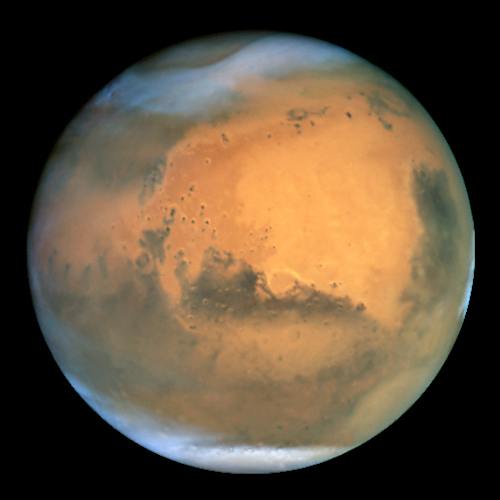
 |
 |
|
|---|---|---|
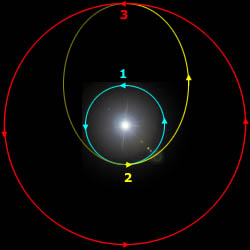 |
|---|
A Hohmann trajectory takes you from one circular orbit to another, such as from Earth's orbit to Mars' orbit.
The spacecraft starts on the cyan circular orbit.
At point "2", the spacecraft fires its rockets and increases its speed. From there, it coasts along the yellow trajectory to point "3".
When the spacecraft arrives at point "3", it fires its rockets to decrease its speed, placing it on the circular red trajectory.
In a trip from the Earth to Mars, the Earth is at point "2" and Mars is at point "3".
Departure velocity from the Earth = 2.95 km/s Arrival velocity with respect to Mars = 2.65 km/s Travel time from Earth to Mars = 8.5 months Wait time on Mars for Hohmann window = 14.9 months Travel time from Mars to Earth = 8.5 months Total mission time = 31.9 monthsThe total change in velocity that the rocket has to generate is 5.60 km/s. This is within the reach of a hydrogen+oxygen rocket, which has an exhaust speed of 4.4 km/s. This is the minimalist trajectory. If more rocket power is available then the travel time decreases.
Calculation of the Earth-Mars Hohmann orbit
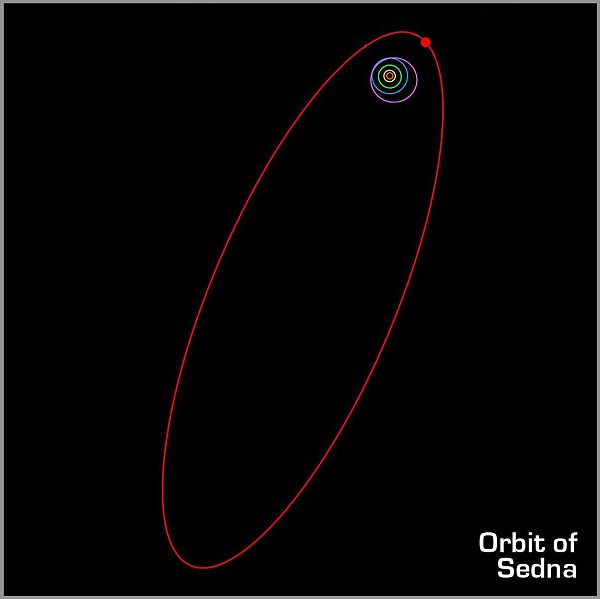 |
|---|
The Oberth maneuver allows one to use a planet to magnify the impulse from a rocket.
For a Hohmann trajectory, the travel time from Earth to Mars is 289 days, which is a long time to be in zero gravity and in the radiation of space. The Oberth effect can speed up the trip.
Suppose a spacecraft is on a highly elliptical orbit, with a perigee just larger than the Earth's radius and an apogee much larger than the Earth's radius. Such an orbit would look like the Kuiper belt object "Sedna" pictured above.
An Oberth maneuver procedes as:
1) Start far from the planet at apogee
2) Coast toward the planet on a trajectory where the perigee is just above the
surface of the planet.
3) At perigee, fire the rockets at maximum power
4) Coast away from the planet. The rocket escapes the planet with a speed that is
enhanced by the Oberth effect
Planet escape speed = Vescape = 11.2 km/s for the Earth
Speed change from the rocket = Vrocket = 10 km/s for a mighty rocket
Departure speed from the planet = Vdepart = 18 km/s
V2depart = V2rocket + 2 Vrocket Vescape Derivation
The Oberth effect can speed up the travel time to Mars to 3 months.
The Oberth effect can greatly magnify a small rocket boost. For example, if Vrocket = 1 km/s then Vdepart = 4.8 km/s. This allows one to transport large payloads between planets, if speed isn't important.
 |
|---|
The Oberth effect can be used on any planet or moon. The larger the mass of the object the more extreme the effect.
Vescape (km/s)
Moon 2.38
Mars 5.03
Earth 11.2
Saturn 35.5
Jupiter 59.5
Sun 618
Any mission to the outer solar system first passes by Jupiter, both for the gravity assist
and for an Oberth boost. Jupiter is the hub of the solar system.
If you have a nonzero approach speed for a planet then the Oberth maneuver gives a departure speed of
Approach speed from deep space = Vapproach V2depart = V2approach + V2rocket + 2 Vrocket Vescape Derivation
A mission to Mars might use the following strategy:
Mine ice on the moon.
Launch the ice from the moon into space.
Use solar energy to convert ice into hydrogen and oxygen and then liquify it. This is now rocket fuel.
Use this fuel to send supplies to Mars. The supplies will go to Mars with a slow trajectory and the astronauts will go later using a faster trajectory. Using the Oberth effect, it's possible to move a heavy spacecraft to Mars using two light nudges from the rockets, but the travel time is long.
Launch a rocket from the Earth and place it in an Oberth-style elliptical orbit. Fuel the rocket with ice from the moon. This is the rocket that will go to Mars.
Launch the astronauts from Earth and place them on board the Mars rocket.
When the fully-fueled Mars rocket is at perigee, fire the rocket so that it escapes the Earth and heads for Mars. This is the "Oberth maneuver".
Upon arriving at Mars, use an inverse Oberth maneuver to place the rocket into an elliptical orbit around Mars.
The spacecraft must now fire its rockets again to go from an elliptical orbit to a circular low-Mars orbit. It can use fuel that was sent ahead of time from the Earth for this maneuver.
Once the spacecraft is in low-Mars orbit, the astronauts can drop to the surface of Mars using the atmosphere for breaking.
On Mars, ice is used to fuel the rocket that will lift the astronauts into low-Mars orbit.
Once exploration is complete, the astronauts return to the spacecraft.
Using fuel sent ahead of time from the Earth, the spacecraft goes from a low-Mars orbit to an elliptical orbit.
The spacecraft refuels again and uses an Oberth maneuver to depart Mars. Upon reaching Earth, an inverse Oberth maneuver is used to place the spacecraft in an Earth elliptical orbit.
With this mission plan, the manned rocket uses fuel only during the Oberth and inverse Oberth maneuvers. This minimizes the travel time.
mSieverts Shielding
/year (tons/m^2)
Earth surface, all radiation 3.5 10
Earth surface, cosmic rays only .39 10
Earth 2 km altitude, cosmic rays only .9 8
Earth 3 km altitude, cosmic rays only 1.7 7
Earth 4 km altitude, cosmic rays only 3.3 6
Earth, 12 km altitude, equator 20 2.5
Earth, 12 km altitude, poles 100 2.5
Space station, 420 km altitude 150 .01 1/8 inch aluminum walls
Space 600 .01 Beyond the Earth's field
Space, 4 tons/m^2 shield 2.5 4
Mars surface 220 .16
Mars Hellas Basin, 7 km deep ? .29
To shield against cosmic rays, you need around 4 tons/meter^2 of material.
This means the ship will weigh at least 500 tons, which emphasizes the need
to get material from the moon. The liquid hydrogen & oxygen fuel can be used
for radiation shielding.
The mass of food and water needed for the journey from Earth to Mars is much less than the mass of the radiation shielding, so you don't need to skimp on food quality.
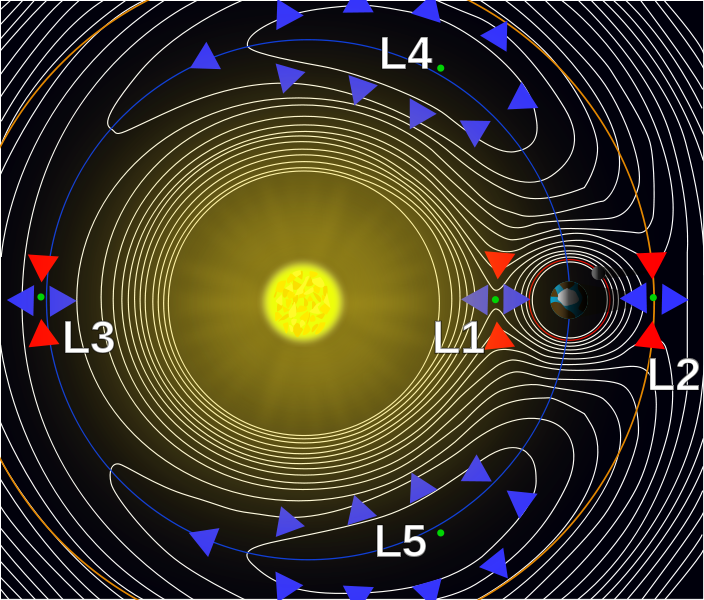 |
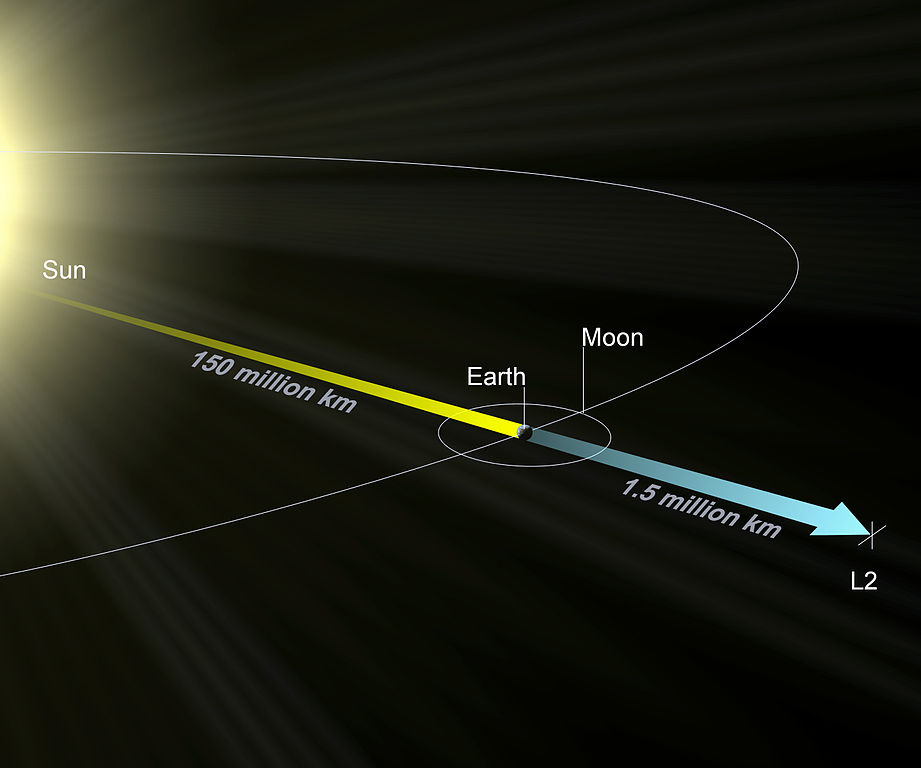 |
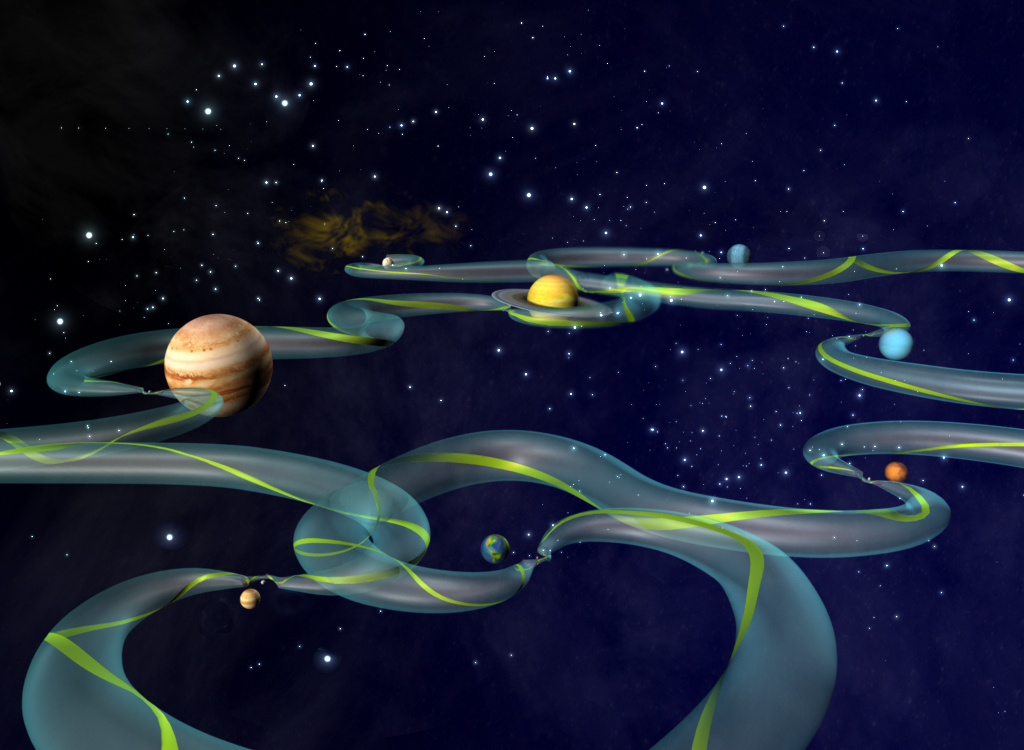 |
|---|---|---|
Using Lagrange points and gravity slingshots, objects can be moved around the solar system with minimal propulsion.
Gravity assists can change a trajectory by of order the escape speed. You can use a sequence of gravity assists like a billiards-style trick shot to move objects around the solar system, requiring only nudges between assists. This is the "interplanetary transport network".
Mass Escape Orbit
(Earth speed speed
masses) (km/s) (km/s)
Sun 333000 618.
Mercury .0553 4.3 47.9
Venus .8150 10.46 35.0
Earth 1.0000 11.2 29.8
Mars .1074 5.03 24.1
Vesta .000045 .36 19.3
Ceres .00016 .51 17.9
Pallas .0000359 .32 17.6
Jupiter 317.83 59.5 13.1
Saturn 95.16 35.5 9.64
Uranus 14.50 21.3 6.81
Neptune 17.20 23.5 5.43
Pluto .00220 1.23 4.74
Moon .0123 2.38 1.02
Charon .000271 .23
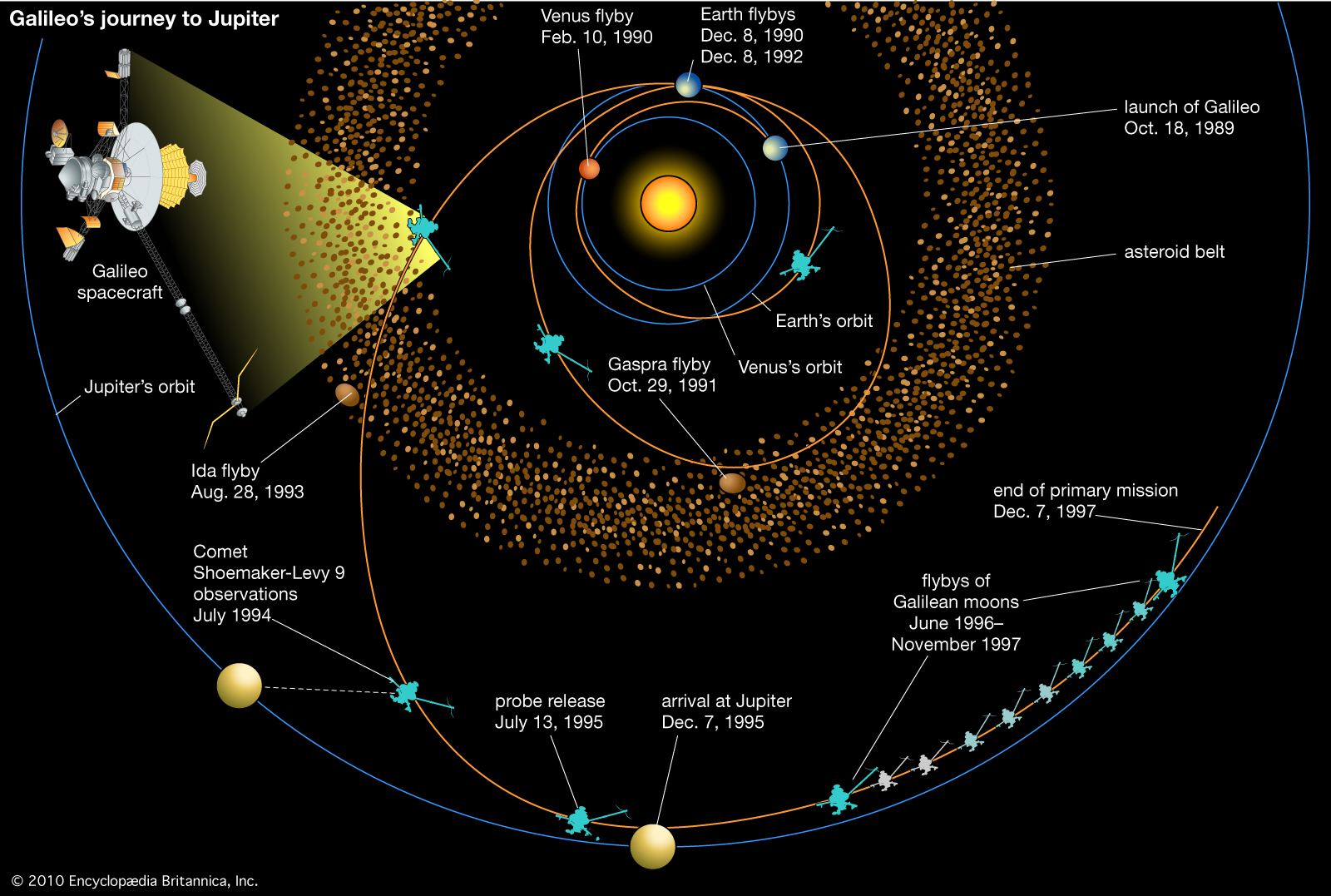 |
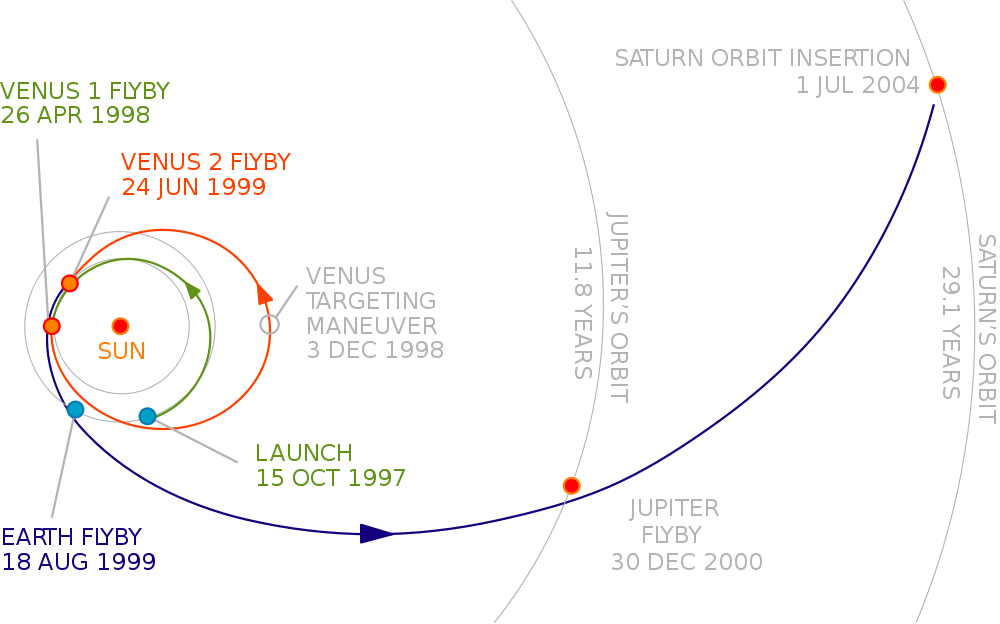 |
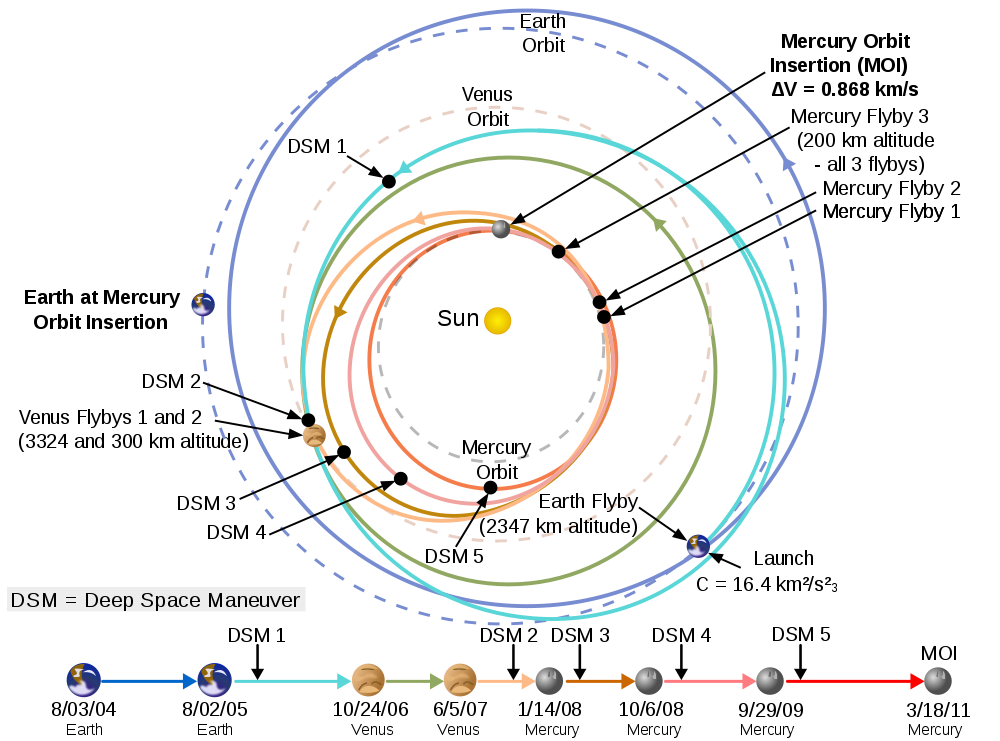 |
|---|---|---|
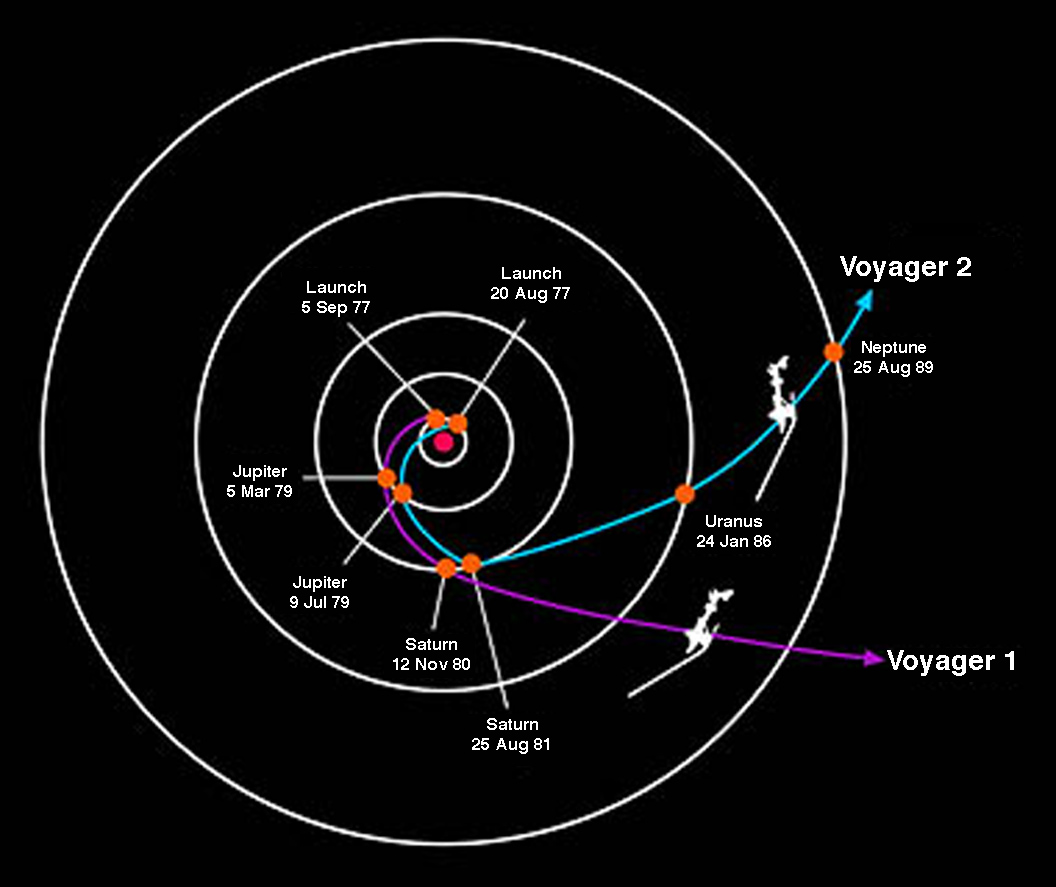 |
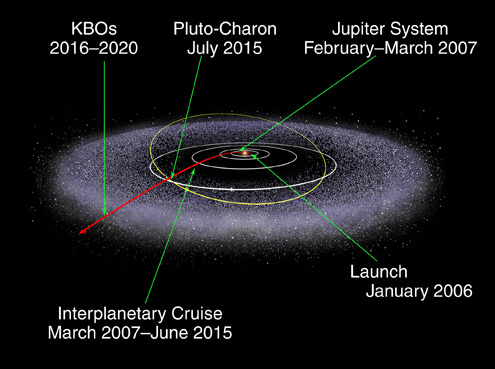 |
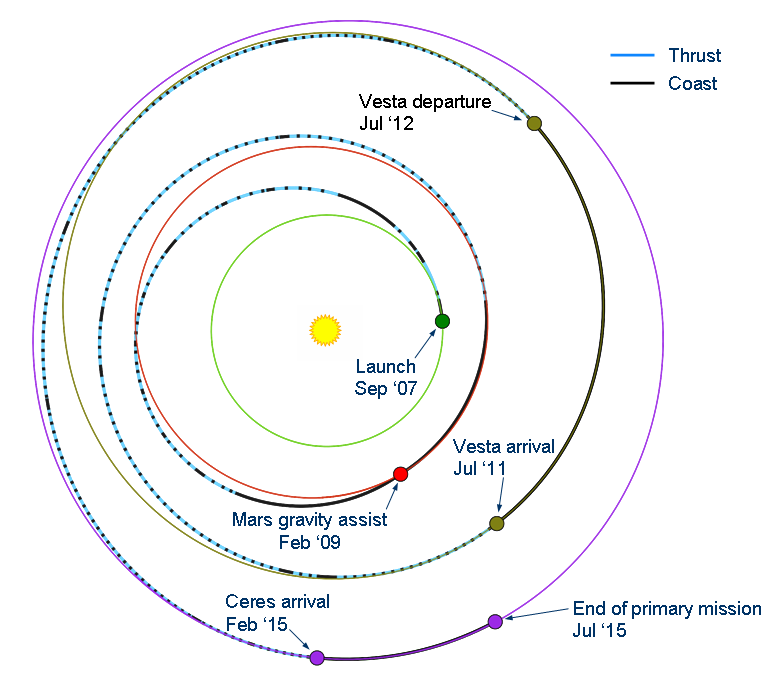 |
|---|---|---|
Each of these missions is powered by chemical rockets except for Dawn, which is powered by an ion drive. Ion drives require fewer gravitational assists than chemical rockets.
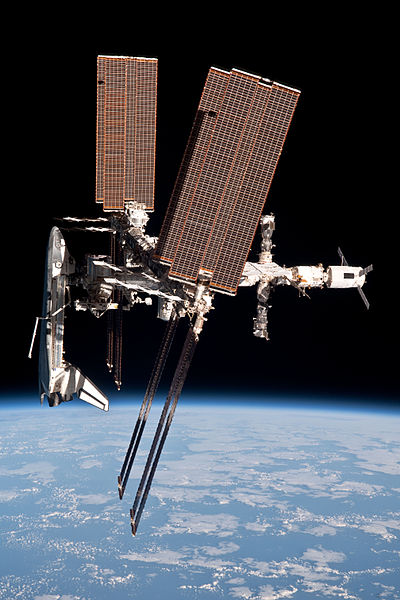 |
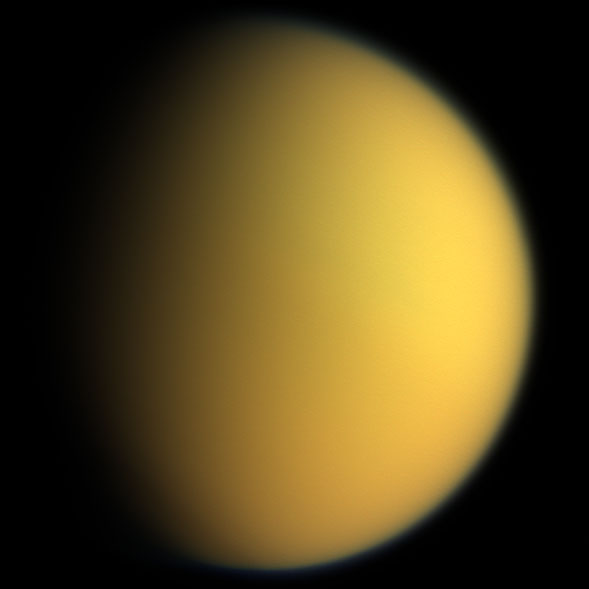 |
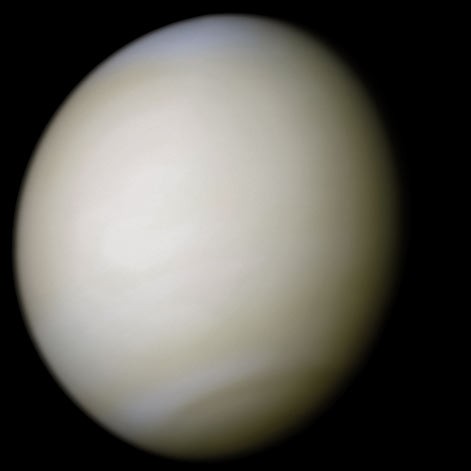 |
 |
|---|---|---|---|
Gravity Temp Pressure Density N2 O2 CH4 CO2 Ar Xe H2S
(m/s2) (K) (Bar) (kg/m3) (kg/m3) (kg/m3)
Earth 9.80 287 1 1.22 .94 .209 0 .00048 .0011 0 0
Mars 3.71 210 .0063 .020 .00054 0 0 .020
Titan 1.35 94 1.46 5.3 5.22 0 .074 ?
Moon 1.62 220 0 0 0 0 0 0 0
Pandora 7.8 290 1.20 1.46 1.2 .30 ? .26 ? .080 .015
For humans, xenon is an anaesthetic and H2S is toxic.
Arctic scuba gear
Wingsuit (human-powered flight is easy on Titan)
Strontium-90 radioactive power source
Device for extracting nitrogen from the air.
Device for electrolyzing ice to produce oxygen.
You don't need a pressure suit because the pressure is 1.5 times Earth pressure.
Suppose a spaceship is on an elliptical orbit, such as the yellow orbit above.
G = Gravitational constant M = Mass of sun m = Mass of spacecraft R = Distance of spacecraft from sun R1 = Radius of perigee (point of closest approach to the star) R2 = Radius of apogee (point on orbit furthest from star) V = Velocity of spacecraft V1 = Velocity of spacecraft at perigee V2 = Velocity of spacecraft at apogee A = Semi-major axis of the orbital ellipse = .5 (R1 + R2) E = Energy = Kinetic energy + Gravitational potential energy = .5 m V^2 - G M m / RAngular momentum is conserved. Equating angular momentum at apogee and perigee,
V1 R1 = V2 R2Equating energy at apogee and perigee,
E = .5 m V1^2 - GMm/R1 = .5 m V2^2 - GMm/R2Algebra gives
E = - G M m / (2A)The energy at radius R is
E = .5 m V^2 - GMm/R = - GMm/(2A)For a circular orbit, V^2 = GM/R, and
E = - .5 m V^2 = - .5 GMm/RMake dimensionless:
G = 1 M = 1 m = 1 R1 = 1 R2 = r Solve for V1 and V2 .5 V1^2 - 1 = - 1/(1+r) -> V1^2 = 2r / (1+r) .5 V2^2 - 1/r = - 1/(1+r) -> V2^2 = 2/r - 2/(1+r)For the Earth-Mars system,
r = R2/R1 = 1.524 V1 = 1.09891 V2 = .72107 U1 = Velocity of a circular orbit at radius R1 = 1. U2 = Velocity of a circular orbit at radius R2 = 1/sqrt(r) = .81004 D1 = Departure velocity from the Earth = V1 - U1 = .09891 D2 = Arrival velocity at Mars = U2 - V2 = .08897To restore the units, multiply the dimensionless velocities by the true value of U1.
U1 = 29.8 km/s = Velocity of Earth in its orbit U2 = 24.1 km/s = Velocity of Mars in its orbit D1 --> D1 * U1 = .09891 * 29.8 = 2.948 km/s D2 --> D2 * U2 = .08897 * 29.8 = 2.651 km/sThe departure velocity from the Earth is
D1 = 2.95 km/sUpon arriving Mars, the velocity with respect to Mars is
D1 = 2.65 km/sThe total change in velocity that the spacecraft must generate is
D1 + D2 = 5.60 km/sA hydrogen+oxygen rocket has an exhaust speed of 4.4 km/s and is capable of generating this change in velocity.
 |
|---|
For a Hohmann trajectory, the travel time from Earth to Mars is 289 days, which is a long time to be in zero gravity and in the radiation of space. The Oberth effect can speed up the trip.
Suppose a spacecraft is on a highly elliptical orbit, with a perigee just larger than the Earth's radius and an apogee much larger than the Earth's radius. Such an orbit would look like the Kuiper belt object "Sedna" pictured above.
G = Gravitational constant
M = Mass of Earth
R1 = Perigee radius
~ Radius of Earth
R2 = Apogee radius
>> Radius of the Earth
V1 = Velocity of spacecraft at perigee
V2 = Velocity of spacecraft at apogee
~ 0
U1 = Velocity of a spacecraft on a circular orbit at radius R1
U1 = G M / R1
= 7.2 km/s for the Earth
U2 = Velocity of a spacecraft on a circular orbit at radius R2
~ 0
Ve = Escape velocity from the Earth
When the spacecraft is at apogee, the energy is
E = Kinetic energy + Gravitational energy = 0 + 0When the spacecraft is at perigee, the energy is
E = Kinetic energy + Gravitational energy
= 1/2 m V1^2 - G M m / R1
V1^2 = 2 G M / R1
= 2 U1^2
= Ve^2
V1 is equal to the "Escape velocity". If a spacecraft starts from the surface of the
Earth and is launched directly away from the Earth, it must have a velocity of
at least Ve to escape the Earth.
The escape velocity can also be obtained from the gravitational potential energy.
1/2 m Ve^2 = G M m / R1 --> Ve^2 = 2 G M / R1Suppose the spacecraft fires its rockets at perigee and increases its speed by D1.
The energy is now
E = 1/2 m (V1 + D1)^2 - G M m / R1 = 1/2 m (Ve + D1)^2 - 1/2 m Ve^2 = 1/2 m (D1^2 + 2 D1 Ve)The spacecraft is now on a hyperbolic orbit and will escape the Earth, As it recedes from the Earth, it will approach a constant velocity Q1. When it is far from the Earth, the energy is
E = 1/2 m (D1^2 + 2 D1 Ve) = 1/2 m Q1^2 Q1 = SquareRoot(D1^2 + 2 D1 Ve) Q1 > D1If the spacecraft starts in an elliptical orbit and changes its speed by D1 at perigee, it departs the Earth at speed Q1, which is larger than D1. This is the "Oberth effect".
If a rocket changes its velocity by 5 km/s at perigee, it departs the Earth with a velocity of
Q1 = SquareRoot(5^2 + 2 * 5 * 11.2)
= 11.7 km/s
This gets you to Mars in about 4 months.
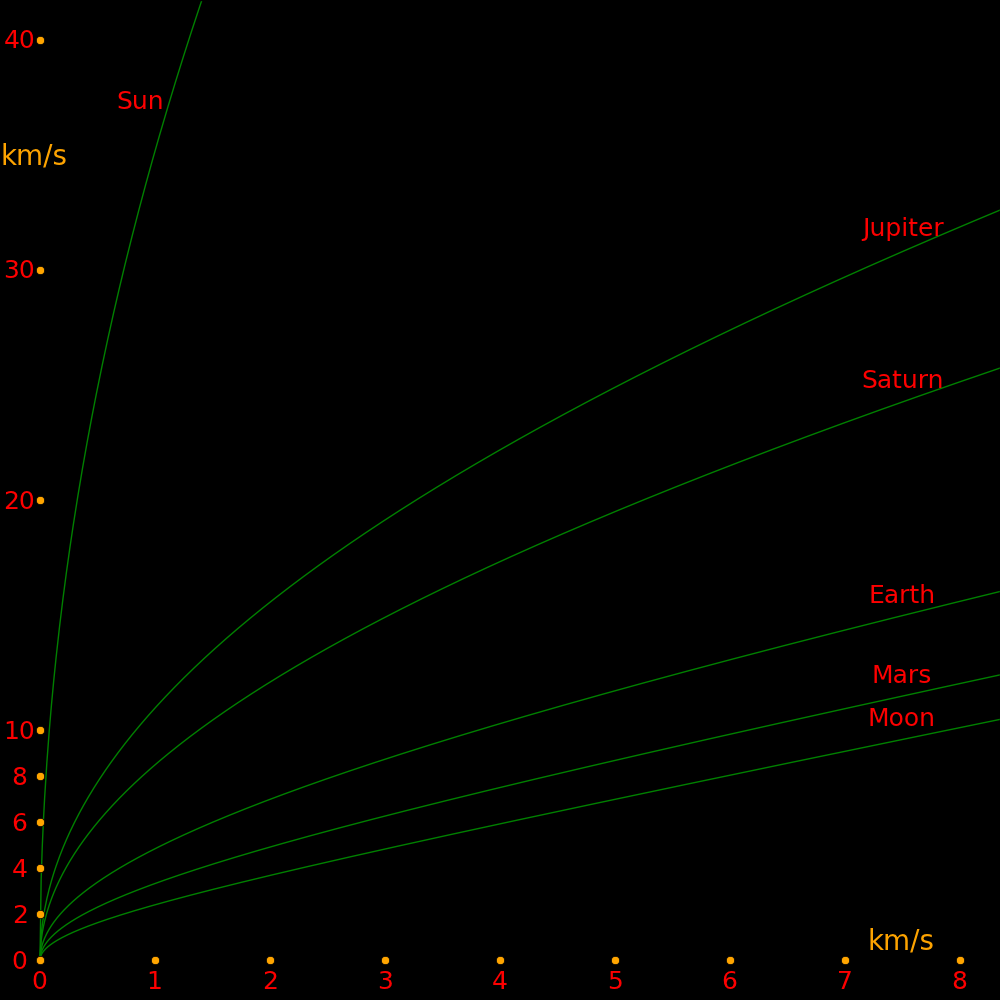 |
|---|
X: Change in velocity at perigee Y: Departure velocity from the planet Ve: Escape velocity for the planetThis is a plot of
Y^2 = X^2 + 2 X Ve
Ve (km/s)
Moon 2.38
Mars 5.03
Earth 11.2
Saturn 35.5
Jupiter 59.5
Sun 618.
 |
|---|